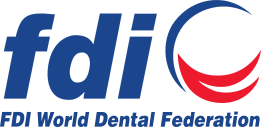Personalized bone reconstruction in orthodontic point of view- indication and limitation
Location
Speaker
Prof. Tomazs Gedrange
Professor Dresden University of Technology, Germany
Study of dentistry at the Friedrich Schiller University (FSU) Jena, Germany
Study of medicine at the Wroclaw Medical University, Poland
2002 Education as tutor in PBL (Problem based learning), Harvard University education
programme1993-1995 Assistant at the Institute of Pharmacology and Toxicology at the FSU Jena, Germany
2004-2011 Professor and Director of Department of Orthodontics, Preventive and Pediatric
Dentistry Centre of Dentistry and Oral Health, Ernst-Moritz-Arndt-University, Greifswald,
Germany
Since 2010 – Professor in the department of dental surgery at Medical University of Wroclaw,
Poland
2013 nomination from president Republic of Poland to professor (the title of Presidential
Professors)
He is recipient of numerous awards and grands over 3 million Euro and published more than 220 original articles in pre-reviewed journals.
Organizer
Abstract:
An accurate diagnosis is the most essential requisite for providing treatment with a predictable long term success. Prior to administering treatment, the aetiology of the disorders must be investigated and a correct diagnosis established. An abundance of treatment plans and options are available today, limited only by medical contraindications, time, and the financial resources of a given patient.
Defects involving severe disorders in the relationship between the maxilla and the mandible do not qualify only for orthodontic treatment. Such disorders should be treated by an interdisciplinary orthodontic and surgical team. Despite the use of standard treatment methods, the therapy is always planned and carried out individually for each patient.
Alveolar bone seems to play a key role in providing support to the teeth, which are anchored to the bone by desmodontal fibers. The progressive alveolar bone resorption process occurs due to a loss of anatomic, biologic and mechanical factors.
In order to avoid harvesting an autograft, and thereby eliminating additional surgical procedures and risks, bone grafting materials and substitutes are alternative filler materials to be used for ridge augmentation.
Now demanding, advanced treatment plans are eyes of the future. This session presents the essential practical steps necessary in diagnostic and decision-making process to arrive at an aesthetic and a comprehensive treatment plan.
Regenerative medicine, which has already been known in reconstructive surgery, is used increasingly more often in the treatment of orthognathic defects. It is a mistake to ignore skeletal disorders in adult patients in the hope that bone formation can be influenced by the orthodontic movement of the tooth.
Learning objectives:
- To overview about the different aesthetic possibilities
- Treatment for the removal of anterior crowding
- To assess the economic and therapeutic points of view
